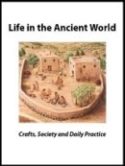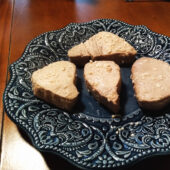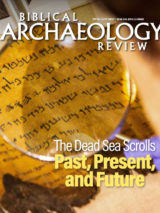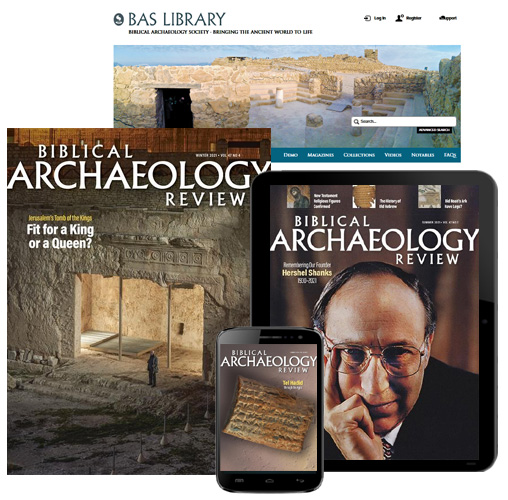What Is Coptic?
The language of Christian Egypt

Coptic Egyptian was superseded by Arabic as the vernacular language of Egypt. This 17th-century bilingual collection of Christian exhortative texts features both languages in parallel columns. Metropolitan Museum of Art, New York, Public Domain.
Coptic is the name of the final stage of the indigenous language of Egypt. A direct descendant of ancient Egyptian, it belongs to the Afro-Asiatic language family and is closely related to both the Semitic languages of the Levant and Southwest Asia (such as Akkadian, Hebrew, and Aramaic) and the various languages of northern Africa. First attested in writing in the third century CE, it was primarily associated with the Coptic Church and established itself as the language of Egyptian Christians. Coptic Egyptian was also instrumental in Champollion’s decipherment of hieroglyphs and the ancient Egyptian language.
Coptic Egyptian developed naturally from earlier forms of the Egyptian language once written in the hieroglyphic, hieratic, and Demotic scripts. Unlike those earlier stages, however, Coptic Egyptian was written with alphabetic characters adopted from ancient Greek. Because this set of 24 (or 25) letters could not express all the sounds that existed in ancient Egyptian (e.g., š and č), up to eight more letters were added by adapting characters from the indigenous Demotic script, itself a cursive derivation from hieroglyphs. Like its Demotic precursor, Coptic expressed grammatical categories with prefixes, not suffixes like the earlier stages of ancient Egyptian, and it had the subject-verb-object (“he-listen to her”) verbal pattern. It also retained the definite article (“the”) and expanded the indefinite article (“a” or “an”) to express the plural form (“some”).

Coptic Egyptian uses an alphabet adopted from ancient Greek (line 1), supplemented by eight characters (line 2) to express the full phonetic range of the Egyptian language. Public domain.
The earliest attempts to use Greek characters to spell out Egyptian appear as isolated glosses in hieratic and Demotic papyri already in the first and second centuries CE. These include magical and astrological papyri, where the purpose of using a script with characters for vowels was to render the exact pronunciation of various invocations. More examples come from a temple archive discovered in the so-called “house of the ostraca” near the temple in Medinet Madi (ancient Narmouthis). Dated to about 150–225, some of the ostraca (inscribed pottery sherds) contain Egyptian words in hieratic followed by their Old Coptic transcriptions. Some hybrid texts use Demotic mono-consonantal signs supplemented by Greek signs only for the vowels.

This piece of limestone inscribed with ink records a homily by the great archbishop of Alexandria, St. Athanasius (295–373 CE). Dating to around 600, it was excavated at the Monastery of Epiphanius at Thebes. Metropolitan Museum of Art, New York, Public Domain.
These early examples show a variety of approaches and attest to a period of great experimentation that took place independently at different places. Even when the Coptic alphabet developed into a fully functional writing system, later in the third century, there remained regional differences. During the ensuing millennium, when Coptic was spoken and written as a living language, there never was a unified, universally used Coptic alphabet but rather over a dozen regional or dialectal variants. Like in Greek, Coptic letters also served to record numbers (A for 1, K for 20, P for 100, etc.). And like most ancient (and medieval) writings, Coptic texts generally do not separate words.

Coptic Egyptian emerged as a distinct language in the third century and for about two centuries it coexisted with Demotic. Although the Old Coptic experiments with the Greek alphabet took place in the circles of traditional (“pagan”) temple administration and education, the alphabetic writing system was embraced and proliferated by the early Church for writing Christian scriptures, likely because it was free from the taint of “paganism.” Coptic eventually replaced Greek as the language of official administration. Apa Shenoute, who shaped the early Christian monastic movement, is credited with elevating Coptic into a literary language in the fifth century. Following the Arab conquest of Egypt in 641, Coptic was gradually replaced by Arabic as a spoken daily language, until it generally disappeared in the 11th century. Even then, however, pockets of learned Copts kept it somewhat alive until the early 19th century as an instrument of ethnic and religious identity. Although now dead as a spoken and written language, Coptic is still marginally used in the rituals of the national Coptic Church.

Shenoute of Atripe (347–465 CE) was a charismatic early Christian leader and prolific writer. This fifth-century tombstone is inscribed with his name prefixed by the honorific apa, “father.” Staatliche Museen zu Berlin, Skulpturensammlung und Museum für Byzantinische Kunst / Antje Voigt, CC BY-SA 4.0.
Like in Earlier Egyptian, there were several regional dialects of Coptic. They differ mostly in phonetics, but to some degree also in their vocabulary and syntax. Obscured in the earlier writing systems, which were purely consonantal, regional differences in the pronunciation of Egyptian are on full display in the Coptic alphabet, which expresses vowels. The modern study of Coptic has identified many different dialects and subdialects that were once spoken across Egypt. The two dominant dialects were Sahidic and Bohairic. Centered in Thebes, Sahidic is attested from the earliest examples of Coptic in the third century and was the dominant dialect until about the tenth century, when it was gradually supplanted by Bohairic. Centered in the north (the Nile Delta), Bohairic is first attested in the fourth century and remains the dialect of the Coptic liturgy. There were four more major dialects: Fayyumic, Mesokemic (or Oxyrhynchite), Lycopolitan (formerly Sub-Akhmimic), and Akhmimic.

In Coptic Egyptian, dialects are on full display due to the use of an alphabetic script reflecting vowels. Public domain.
Thanks to centuries of cultural and political dominance by Greek-speaking elites, a considerable portion of Coptic vocabulary comes from Greek. The influence of Greek on the Egyptian language was furthered by translations into Coptic from Greek.
Since Coptic was the indigenous language of Egypt for almost a millennium, it is attested through a variety of documentary writings of both private and official character, including contracts, accounts, receipts, decrees, school texts, and letters. As a literary language and the official language of the Egyptian national church, it survives in countless religious works, including the Bible, liturgy, biblical commentaries, apocrypha, homilies, hymns and prayers, monastic rules, collections of sayings, lives of saints, martyrologies, and funerary monuments. A good part of Coptic literature consists of translations from Greek—the language used by the educated elites. As Arabic was becoming the dominant language of the country, following the Arab conquest of Egypt in 641, even liturgical books and manuals for personal devotion were written in a mix of Coptic and Arabic (see first image above), until Arabic superseded Coptic in all aspects of daily life.

Biblical manuscripts are the most numerous examples of Coptic literature. Found in the Theban region and dated to around 600 CE, this slab of wood records the Song of Songs 5:10–7:4. Metropolitan Museum of Art, New York, Public Domain.
First and foremost, translations from Greek include the Bible. The Bible had been translated into Coptic from the very beginnings of the language in the third century: the Old Testament was translated from the Septuagint, and the New Testament from the original Greek versions. No single ancient manuscript, however, contains the entire Bible or even the entire Old or New Testament. Early scientific editions thus usually drew on a single manuscript for individual biblical books, while more recent scholarship tends to collate different available manuscripts in creating what might eventually be a critical edition of the entire Coptic Bible. The Digital Edition of the Coptic Old Testament, for example, documents all the manuscript evidence and provides digital editions of all Old Testament manuscripts, critical editions of all Old Testament books, and translations into English, German, and Arabic. The Coptic Bible is an online platform that aggregates previous editions of the entire Christian Bible, arranged by individual books of both the Old and New Testaments.

The oldest complete manuscript of the Book of Psalms is the so-called Pillow Psalter dating to about 400 CE. Probably the most famous ancient collection of Coptic manuscripts was discovered in 1945 near Nag Hammadi in southern Egypt. Known as the Nag Hammadi Codices or the Nag Hammadi Library, they shed light on the diverse religious and philosophical currents of the early Christian period, especially Gnosticism. These manuscripts and their documentation are available digitally from Claremont Colleges Digital Library.
The modern linguistic study of ancient Egyptian languages has resulted in a robust understanding of their development and grammatical system. The most comprehensive grammar of Coptic is Bentley Layton’s A Coptic Grammar. Among the textbooks that are suitable for self-study are Johanna Brankaer’s Coptic: A Learning Grammar (Sahidic) and Layton’s Coptic in 20 Lessons: Introduction to Sahidic Coptic. The Online Coptic Scriptorium offers linguistically analyzed Coptic texts for private study of the language. For a systematic overview of all the major dialects of Coptic, readers can go to James P. Allen’s Coptic: A Grammar of Its Six Major Dialects. The most comprehensive dictionary of Coptic remains Walter E. Crum’s A Coptic Dictionary (Clarendon Press, 1939), now also online, although it only contains the indigenous, Egyptian vocabulary. A work in progress, the new Coptic Dictionary Online seeks to provide access to both Egyptian and Greek vocabulary used in Coptic.
Related reading in Bible History Daily:
All-Access members, read more in the BAS Library:
Coptic Egypt’s Christian Language
Nag Hammadi Codices Shed New Light on Early Christian History
The Gospel of Thomas
Not a BAS Library or All-Access Member yet? Join today.
Must-Read Free eBooks
Want more Bible history?
Sign up to receive our email newsletter and never miss an update.
All-Access Pass
Dig into the world of Bible history with a BAS All-Access membership. Biblical Archaeology Review in print. AND online access to the treasure trove of articles, books, and videos of the BAS Library. AND free Scholar Series lectures online. AND member discounts for BAS travel and live online events.
Subscribe Today












This article seems fair.
I’d have pinpointed which documents were in which dialect: e.g. Pillow Psalter is in Mesokemic. Shenoute raised Sahidic to be the Coptic of the Late-Antique Church which became Miaphysite.
My largest point of deviation would be the impact of the Arabs. This ousted Greek but did not change the status of Coptic(s) – at first. From what I’ve read, it was the rebellions under the ‘Abbasids which forced the rise of Arabic; thus Arabic translations of – for instance – John of Nikiu (most of this is now read only in Ethiopic), and Severus bin Muqaffa’s project “History of the Patriarchs”.